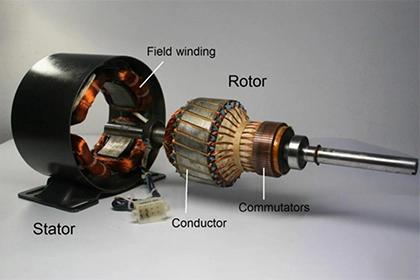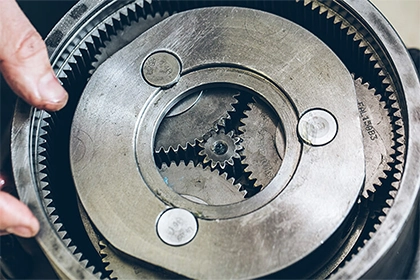
Electric Motors – How to Test Inductance?
In this article, we will delve into the topic of testing inductance in electric motors, discussing its significance, testing methods, and the benefits of conducting these tests.
Electric motors are essential components in various industries, powering everything from small appliances to large industrial machinery. Understanding the performance and characteristics of electric motors is crucial for ensuring their optimal operation. One important parameter to measure is inductance, which plays a vital role in motor performance. In this article, we will delve into the topic of testing inductance in electric motors, discussing its significance, testing methods, and the benefits of conducting these tests.
Importance of Inductance in Electric Motors
Inductance is a fundamental property of electric motors that affects their performance and efficiency. It is a measure of how an electric current in a coil generates a magnetic field. In electric motors, inductance impacts several key factors, including torque production, speed control, and overall motor efficiency.
By accurately measuring inductance, engineers and technicians can gain insights into the motor's electrical characteristics, identify any potential issues, and make informed decisions regarding maintenance and performance optimization.
Testing Methods for Inductance
There are several methods available for testing inductance in electric motors. Let's explore some commonly used techniques:
1. LCR Meter Method
An LCR (Inductance, Capacitance, and Resistance) meter is a specialized device designed to measure inductance accurately. This method involves connecting the LCR meter to the motor's coil or windings and applying an AC current to the circuit. The LCR meter then measures the inductance value based on the voltage and current phase shift.
LCR meters are widely used in industry due to their accuracy and ease of use. They provide precise measurements of inductance, allowing engineers to assess the motor's performance and identify any deviations from the expected values.
2. Impedance Analyzer Method
An impedance analyzer is another commonly used tool for testing inductance in electric motors. This method involves connecting the impedance analyzer to the motor's windings and applying a range of frequencies to the circuit. The analyzer measures the impedance at different frequencies and calculates the inductance based on the impedance values.
Impedance analyzers offer the advantage of providing inductance measurements across a wide frequency range, allowing engineers to assess the motor's behavior under different operating conditions. This method is particularly useful for identifying any variations in inductance at different frequencies, which can impact motor performance.
3. Oscilloscope and Function Generator Method
For a more hands-on approach, engineers can use an oscilloscope and function generator to test inductance in electric motors. This method involves connecting the function generator to the motor's windings and applying an AC signal at a specific frequency. The oscilloscope is then used to measure the voltage across the coil or windings.
By analyzing the voltage waveform on the oscilloscope, engineers can determine the inductance of the motor. This method provides a visual representation of the voltage waveform, allowing for a more intuitive understanding of the motor's inductance characteristics.
Benefits of Testing Inductance in Electric Motors
Conducting regular inductance tests on electric motors offers several benefits for maintenance and performance optimization. Let's explore some of these benefits:
1. Early Detection of Faults
Inductance tests can help detect early signs of faults or abnormalities in the motor's windings. Changes in inductance values may indicate issues such as shorted turns, insulation degradation, or coil damage. By identifying these problems early on, maintenance personnel can take proactive measures to prevent further damage and ensure the motor's longevity.
2. Performance Optimization
Inductance tests provide valuable insights into the motor's electrical characteristics, allowing engineers to optimize its performance. By measuring inductance at different frequencies or under various load conditions, engineers can fine-tune motor control parameters, such as speed and torque, to achieve optimal efficiency and performance.
3. Preventive Maintenance Planning
Regular inductance testing can be incorporated into a preventive maintenance program for electric motors. By tracking inductance values over time, maintenance personnel can establish baseline measurements and identify any deviations or trends that may indicate potential issues. This data-driven approach enables proactive maintenance planning, reducing the risk of unexpected motor failures and costly downtime.
Conclusion
Testing inductance in electric motors is crucial for understanding their electrical characteristics, diagnosing faults, and optimizing performance. Methods such as using LCR meters, impedance analyzers, and oscilloscopes provide accurate measurements of inductance, enabling engineers to make informed decisions regarding maintenance and performance optimization.
By conducting regular inductance tests, maintenance personnel can detect faults early, optimize motor performance, and plan preventive maintenance effectively. These proactive measures contribute to the longevity and reliable operation of electric motors in various industrial applications.



Leave a Comment